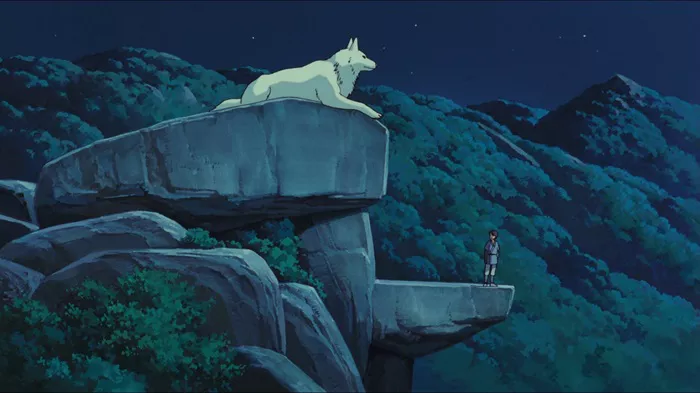Princess Mononoke,” directed by the revered Hayao Miyazaki and produced by Studio Ghibli, stands out as one of the most significant achievements in the history of animated films. Released in 1997, this film blends fantasy elements with deep ecological and social themes, crafting a narrative that resonates with audiences worldwide. At the heart of its appeal is its setting — a richly depicted world that bridges the gap between myth and the historical realities of late Muromachi period Japan (approximately 1336 to 1573 AD). This article explores the multi-layered setting of “Princess Mononoke”, analyzing how it reflects the film’s themes and characters.
Historical and Cultural Backdrop
Link to the Muromachi Period:
Princess Mononoke” is set during the late Muromachi period, a time characterized by social upheaval, war, and the rise of industry, which are crucial elements depicted in the film. The era was marked by the emergence of powerful samurai clans and a decentralized political structure, leading to continuous conflict, known as the Sengoku period, or “Age of Warring States,” which is subtly reflected in the film’s ongoing battles.
Influence of Japanese Folklore:
Miyazaki, known for his profound respect for Japanese folklore and Shinto traditions, infuses “Princess Mononoke” with a rich tapestry of cultural myths. The film’s gods and spirits draw heavily from native beliefs in kami (spiritual presences found throughout nature). The portrayal of these entities reflects a worldview in which nature is alive and sacred, a central theme in Shintoism.
Geographical and Environmental Setting
The Forest Landscape:
The primary setting of “Princess Mononoke” is a vast, dense forest that borders the human iron-making settlement of Iron Town. This forest, home to the titular character San and the Great Forest Spirit, represents the untamed wilderness of ancient Japan, mirroring the untouched forests that once covered much of the country’s mountainous landscape.
Iron Town and Human Encroachment:
Contrasting with the forest is Iron Town, a fortress-like settlement that represents human ingenuity and the drive for technological advancement. Iron Town is a microcosm of human industry, depicting the ecological impact of deforestation and iron smelting, a real issue during the Muromachi period as Japan’s demand for resources grew.
The Spiritual Realm and Its Inhabitants
The Great Forest Spirit:
Central to the forest’s identity is the Great Forest Spirit, a deity that embodies the duality of life and death. This character is an amalgamation of various mythological creatures in Japanese folklore, symbolizing the cyclic nature of ecosystems — flourishing by day and decaying by night.
Animal Gods and Their Realms:
The film also introduces viewers to several animal gods, including Moro, the wolf god, and Okkoto, the boar god. These characters and their communities highlight the interconnectedness of all forest life and their dependency on the forest’s integrity. The animal gods’ aggressive defense against human encroachment reflects the real-world reactions of ecosystems to environmental stress.
Themes Manifested Through Setting
Conflict Between Industrial Progress and Nature:
“Princess Mononoke” explores the tension between industrial progress and environmental conservation, a theme that is deeply embedded in its setting. The gradual destruction of the forest by Iron Town’s activities offers a poignant commentary on the environmental degradation that often accompanies industrial expansion.
The Quest for Balance:
The film does not demonize technology or idealize nature, but rather, emphasizes the need for balance. This quest for equilibrium is visually and narratively represented through the interactions between the natural and human-modified landscapes.
Character Development Through Environment
San, the Princess Mononoke:
San, raised by wolves and deeply integrated into the forest ecosystem, embodies the wild and pristine nature of the forest. Her fierce resistance against human intrusion highlights her role as a protector of the natural world, a character forged and defined by her environment.
Ashitaka’s Journey:
The protagonist, Ashitaka, is drawn from his native Emishi village (representative of historical tribes pushed into obscurity by the dominant Yamato state) into the central conflict of the film. His journey through varied landscapes mirrors his internal quest for understanding and peace between the opposing forces of humans and nature.
Miyazaki’s Environmental Philosophy
Reflections on Human Impact:
Through the detailed and immersive setting of “Princess Mononoke,” Miyazaki offers a meditation on humanity’s impact on the natural world. The film suggests that both the degradation of nature and the technological advances of civilization are parts of the human condition.
A Call for Coexistence:
Miyazaki’s work often concludes with a hopeful note on human capabilities for change. “Princess Mononoke” suggests that through awareness, respect, and technological moderation, a harmonious balance between human needs and environmental stewardship can be achieved.
Conclusion
The setting of “Princess Mononoke” is not merely a backdrop for its story but a vital component of its narrative and thematic structure. It serves as a character in its own right, reflecting and affecting the film’s human and non-human actors. Miyazaki’s masterful integration of historical context, cultural mythology, and ecological commentary through the film’s setting allows “Princess Mononoke” to resonate as a profound ecological and social allegory. As viewers traverse through the lush landscapes and the iron fortresses of the film, they are invited to reflect on their relationship with nature and each other, a testament to the enduring power and relevance of Miyazaki’s work.


